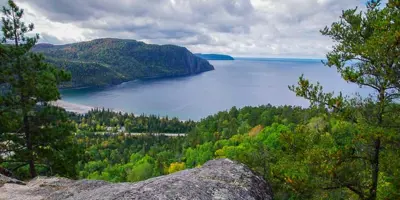Explore Wawa on Foot: Unforgettable Hiking Adventures Await
Wawa, Ontario, is a true northern gem for outdoor enthusiasts, offering breathtaking hiking opportunities for every level of adventurer. From rugged Lake Superior coastlines to peaceful inland trails, the Wawa area is surrounded by pristine wilderness, scenic vistas, and rich natural beauty that’s just waiting to be explored. If your interest is in scenery, waterfalls, flora and fauna, history, or our many local gems, there are plenty of possibilities for day trippers, backpackers and the winter enthusiasts.
Plan Your Hiking Adventure
Whether you're here for a weekend or a full northern getaway, Wawa’s trail network is the perfect way to connect with nature. Don’t forget to bring your camera, wear sturdy footwear, and pack plenty of water and snacks. Trail maps and local advice are available at the Wawa Visitor Information Centre—look for the iconic Wawa Goose!
Visiting in the off-season? (October – May) Visit the Michipicoten Memorial Community Centre located at 3 Chris Simon Drive and friendly staff will assist you in planning your next hike.
Voyageur Trail Association
Many local trails are maintained by the local volunteer group whose vision is to work with volunteers and partner organizations to build a continuous wilderness-style hiking trail from Sudbury through Sault Ste. Marie to Thunder Bay, a distance of some 1,100 km paralleling the rugged Northern Ontario shores of Lake Huron and Lake Superior.
Read more about the association on their website www.voyageurtrail.ca
Trails in and Around Wawa
Whether you’re looking for a short nature walk or a full-day backcountry experience, Wawa’s local trails deliver unforgettable experiences just minutes from town:
- Magpie High Falls to Silver Falls Trail
A local favourite, this easy-to-access trail leads to the stunning Magpie High Falls. Feel the spray of the falls from the viewing platform and enjoy the peaceful forest surroundings along the way.
- Wawa Waterfront Trail
Enjoy a relaxed stroll on the boardwalk along the shoreline of Wawa Lake. This trail is ideal for families and visitors who want a casual walk with access to picnic areas, beaches, and interpretive signs that tell the story of the region.
Lake Superior Provincial Park: A Hiker’s Paradise
Just south of Wawa lies Lake Superior Provincial Park, one of Ontario’s premier destinations for hiking. This vast protected area features over 150 km of trails that wind through ancient forests, over rocky ridges, and along some of the most spectacular shoreline in Canada.
Lake Superior Provincial Park hosts 11 dedicated trails that let visitors explore the variety of landscapes that draw people back year after year.
Check out the Ontario Parks website for more information:
https://www.ontarioparks.ca/park/lakesuperior
Ready to hit the trails? Explore quick highlights of Lake Superior Park’s stunning hikes below:






